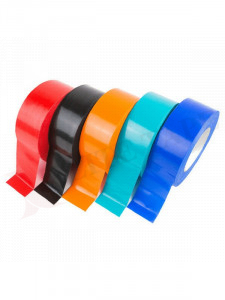Understanding Expansion Joint Foam Strips Importance and Applications
Expansion joint foam strips are critical components in construction and engineering, designed to manage the movement and expansion of structures due to temperature fluctuations, settling, and other environmental factors. These foam strips serve as a buffer between structural elements, ensuring that cracks and damages are minimized while maintaining the integrity of the building or infrastructure.
What Are Expansion Joint Foam Strips?
These strips are made from various types of foam materials, including polyethylene and polystyrene, chosen for their durability, flexibility, and resistance to compression. The primary purpose of expansion joint foam strips is to fill the gaps between different construction materials, allowing for movement without compromising structural integrity. This is particularly important in large structures like bridges, highways, and high-rise buildings, where different sections can expand and contract at different rates.
Why Are They Important?
The importance of expansion joint foam strips lies in their ability to accommodate movement in structures. Without proper expansion joints, various materials like concrete, metal, and wood can experience stress and strain, leading to cracks, warping, or other forms of damage. This can be particularly severe in regions with significant temperature changes, where materials can expand and contract dramatically.
By utilizing expansion joint foam strips, engineers can predict and manage these movements, prolonging the lifespan of the structure and significantly reducing maintenance costs
. They help maintain aesthetic qualities and structural performance by preventing unsightly gaps and misalignments, which can detract from the building's appearance.Applications of Expansion Joint Foam Strips
expansion joint foam strip

1. Highways and Bridges In transportation infrastructure, expansion joint foam strips are essential for accommodating the thermal expansion and contraction of concrete slabs in bridges and roadways. They help prevent cracks that could lead to dangerous driving conditions.
2. Building Constructions In commercial and residential buildings, they are used in walls, floors, and between different building materials. This is especially crucial in seismic areas where buildings must flex and move without sustaining damage.
3. Parking Lots and Garages Foam strips in these environments ensure that the movement of vehicles and the materials used in the construction of the lot don't lead to structural failures.
4. Swimming Pools In pool designs, foam strips are utilized to accommodate the expansion caused by temperature changes in water and the surrounding elements. They protect the edges of the pool and prevent leaks.
Choosing the Right Expansion Joint Foam Strip
When selecting expansion joint foam strips, several factors should be considered, including the type of materials being used, the expected range of movement, environmental factors, and budget considerations. It’s crucial to work with engineers and suppliers who understand the specific requirements of each project to select the right foam type and thickness.
Conclusion
Expansion joint foam strips play an indispensable role in modern construction, helping to mitigate the risks associated with structural expansion and contraction. By understanding their importance and various applications, builders and engineers can enhance the longevity and safety of their projects. Investing in quality expansion joint foam strips not only protects the structural integrity but ultimately leads to more sustainable and reliable constructions in the long run. As construction technology continues to evolve, the advancements in materials used for these strips will undoubtedly lead to even more effective solutions for managing structural movements, ensuring safer built environments for everyone.
-
XIANGFAN Rubber Tape-Ultimate Solutions for All Your Insulation NeedsNewsJun.24,2025
-
XIANGFAN Rubber Tape-Protection for Industrial and Residential ApplicationsNewsJun.24,2025
-
XIANGFAN Rubber Tape: Superior Safety and Sealing for Demanding EnvironmentsNewsJun.24,2025
-
XIANGFAN Rubber Tape: Reliable Solutions for Every Electrical ChallengeNewsJun.24,2025
-
XIANGFAN Electrical & Industrial Tape: Powering Reliability Across IndustriesNewsJun.24,2025
-
XIANGFAN Electrical & Industrial Tape: Excellence in Every ApplicationNewsJun.24,2025
